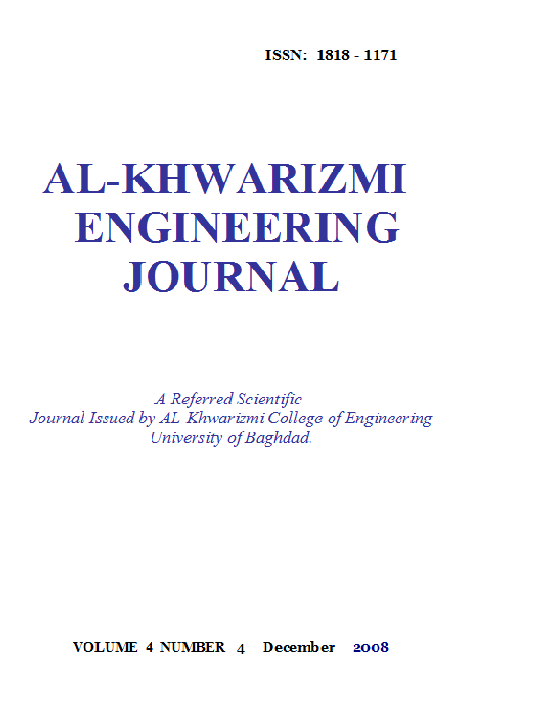Extraction of Phenol From Industrial Water Using Different Solvents
Abstract
The analysis and efficiency of phenol extraction from the industrial water using different solvents, were investigated. To our knowledge, the experimental information available in the literature for liquid-liquid equilibria of ternary mixtures containing the pair phenol-water is limited. Therefore the purpose of the present investigation is to generate the data for the water-phenol with different solvents to aid the correlation of liquid-liquid equilibria, including phase diagrams, distribution coefficients of phenol, tie-lines data and selectivity of the solvents for the aqueous phenol system.
The ternary equilibrium diagrams and tie-lines data for systems containing Water-Phenol-Benzene, Water-Phenol-Chloroform, Water-Phenol-iso-Butyl Acetate, Water-Phenol-Butanol, Water-Phenol-Ethyl Methyl Keton and Water-Phenol-Toluene, were determined at 303 K and atmospheric pressure.
The capacity and selectivity of these organic solvents in each of these systems were determined from the tie-lines data. The capacity of the isobutyle acetate was found to be the highest among the other solvents, and its selectivity was also the highest. Similar results also were obtained for the ethyl methyl keton but gave less capacity and selectivity as compared to the isobutyle acetate. It can be concluded that both isobutyle acetate and ethyl methyl keton are good solvents for extraction of phenol from industrial water.
The liquid-liquid equilibrium data of ternary systems were correlated to the NRTL, UNIQUAC and UNIFAC models of activity coefficient to determine their adjustable parameters. The standard deviations from experimental compositions were calculated. Results show that the correlation may be greatly improved by applying the NRTL model with the regression criteria based on minimizing the experimental and calculating distribution coefficients SK to give an average value of the root mean square deviation about 1.436 % and in terms of the average errors in the distribution ratio for all tie-lines about 10.776 %.
Downloads
References
[2] Anderson, T. F. and Prausnitz, J., M., Ind. Eng. Process Des. and Dev., 17, 1978.
[3] Francis, A. W., “Liquid-Liquid Equilibrium” Interscience publishers, NewYork, 1963.
[4] Fredenslund Aa. and Rasmussen P., “vapor-liquid equilibria using UNIFAC a group contribution method, Elsevier, Amsterdam, 1977
[5] Fredenslund Aa. and Rasmussen P., Fluid phase equilibria, 24, 115-150, 1985.
[6] Hull, A. and Kronberg B., J. Chem. Eng. Data, 51, 202-208, 2006
[7] John A. R., William B. and Theodore K., “Organic solvents”, 1986.
[8] Macedo E. A. and Soares M. E.,Fluid Phase equilibria, 26, 36-42, 1996.
[9] Novak J. P., Matous J. and Pick J., “Liquid-liquid Equilibria”, Elsevier, Amsterdam, 1987.
[10] Null H. R., Phase equilibrium in process design, 1970.
[11] Othmer D. F., Ind. Eng. Chem., 38, 11-19, 1942.
[12] Radecki A. and Grzyboski J., J. Chemical and Engineering data, 20, 2, 1975.
[13] Renon H. and Prausnitz M., AIChE Journal, 14, 1, 1968.
Downloads
Published
Issue
Section
License
Copyright: Open Access authors retain the copyrights of their papers, and all open access articles are distributed under the terms of the Creative Commons Attribution License, which permits unrestricted use, distribution, and reproduction in any medium, provided that the original work is properly cited. The use of general descriptive names, trade names, trademarks, and so forth in this publication, even if not specifically identified, does not imply that these names are not protected by the relevant laws and regulations. While the advice and information in this journal are believed to be true and accurate on the date of its going to press, neither the authors, the editors, nor the publisher can accept any legal responsibility for any errors or omissions that may be made. The publisher makes no warranty, express or implied, with respect to the material contained herein.












